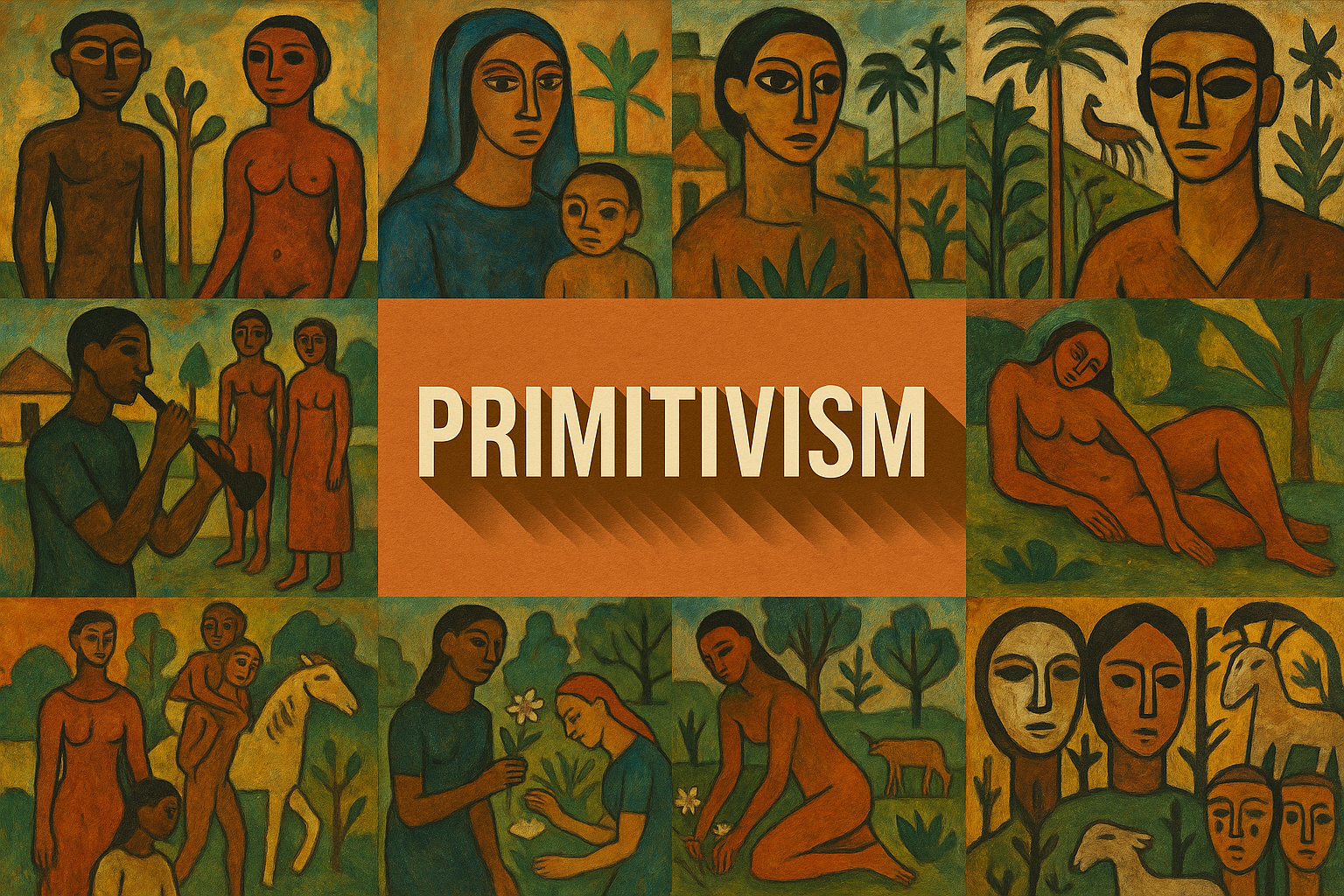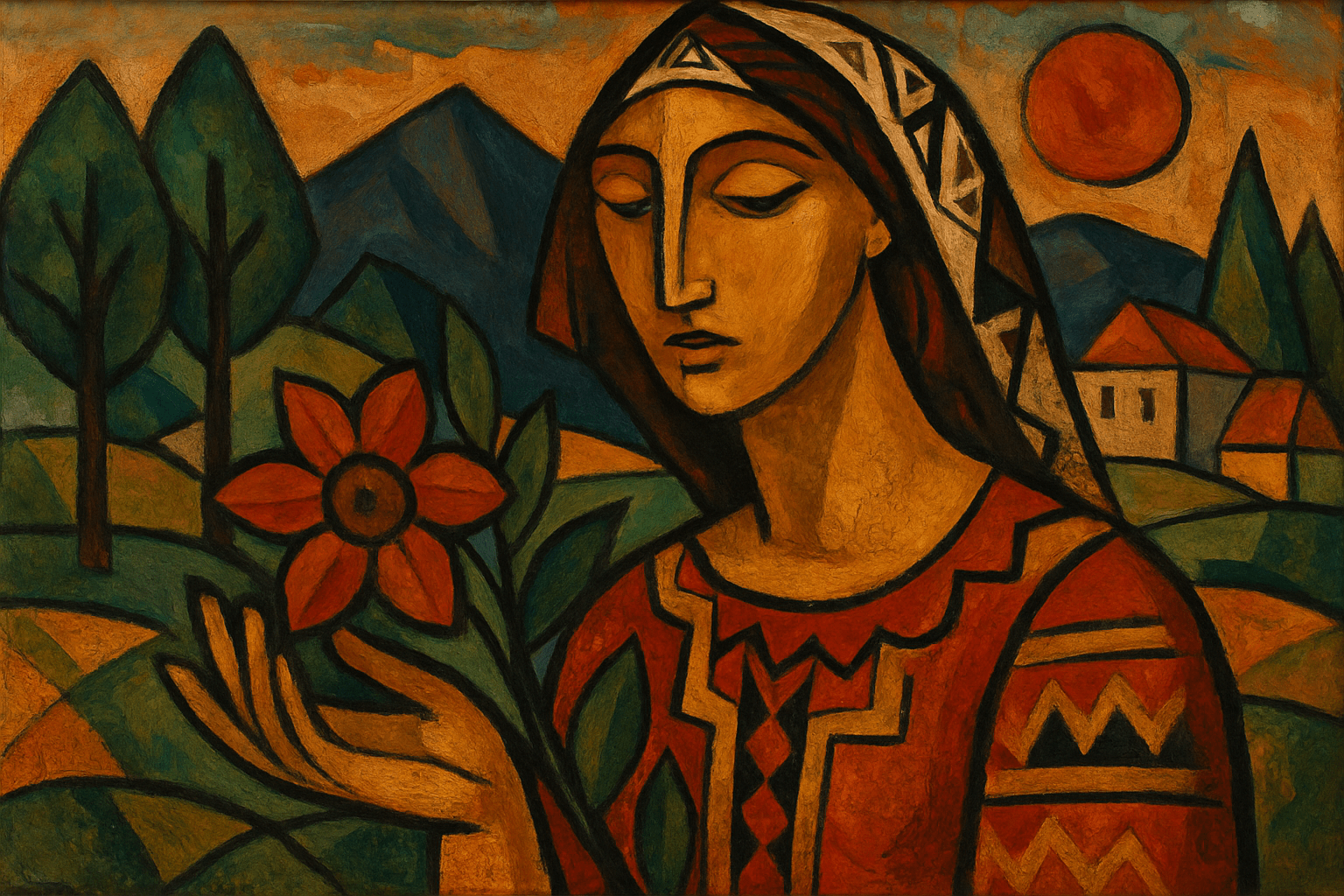
Primitivism
The art style of Primitivism is characterized by its use of simple shapes, colors, and forms. The artists associated with this style sought to return to a more natural and authentic way of creating art. This was in contrast to the more formal and academic styles that were popular at the time. Primitivism is often seen as the precursor to modernism.
AOI thinking about Primitivism [+_~]-/
Overview and Quickfacts
Primitivism is a 20th century art movement that is characterized by its use of simple forms, bright colors, and childlike subject matter. The style is often associated with folk art and naive art, and is sometimes seen as a reaction against the sophistication of the modern world.
Can understand it also, as:
naivete, artlessness, ingenuousness, simplicity, naturalness
Categorize it as:
Impressionism, Modernism
.: Dreaming :.
holds a HAIKU for the art style
:. Thought is power .:
Detailed Description
Primitivism is a 20th century art movement that is characterized by its use of simple, basic shapes and forms. This art style is often associated with folk art and is sometimes seen as a reaction against the more refined styles of the time. Primitivism is often seen as a precursor to the Abstract Expressionist movement. Some of the most famous Primitivist artists include Pablo Picasso, Georges Braque, and Henri Matisse. These artists were all part of the Cubist movement, which was heavily influenced by Primitivism. One of the most famous Primitivist paintings is “Les Demoiselles d’Avignon” by Picasso. This painting features five nude women with distorted facial features. It is considered to be one of the most important paintings of the 20th century.
.. beep, beep, beep ..
<START OF TRANSMISSION>
1. Primitivism is a Western art movement that emerged in the late 19th century. 2. It is characterized by a rejection of the industrial world and a return to more simple, natural forms. 3. Early primitivist artists include Paul Gauguin, Henri Rousseau, and Pablo Picasso. 4. Gauguin's work is often seen as the most important and influential within the movement. 5. Primitivism has its roots in the Romantic movement of the late 18th and early 19th centuries. 6. The term "primitivism" was first used in the late 19th century to describe non-Western art. 7. Primitivism has been seen as a reaction against the excesses of the Industrial Revolution. 8. The movement has also been seen as a reaction against the intellectualism of the Enlightenment. 9. Primitivism has been described as a "yearning for the lost innocence of childhood." 10. The work of primitivist artists is often characterized by bold colors and simple forms. 11. Primitivism has been influential on many subsequent art movements, including Cubism and Abstract Expressionism. 12. The movement has also been seen as a precursor to Postmodernism. 13. Primitivism has been criticized for its romanticized and idealized view of non-Western cultures. 14. The movement has also been accused of racism and ethnocentrism. 15. Primitivism has been praised for its ability to challenge Western notions of progress and civilization. 16. The movement has also been seen as an important early step in the development of Modernism. 17. Primitivism has been the subject of numerous books and exhibitions. 18. The work of primitivist artists continues to be popular and influential. 19. Many contemporary artists have been influenced by primitivism. 20. Primitivism is considered to be an important part of the history of Western art.
<EOF>
.. robbel bob
Visual Examples from our image gallery
Coming soon, we are so slow .. might never come
Artists, Paintings, and more
(be aware, can be highly speculative)
Artists (be aware, speculation possible):
1. Paul Gauguin (1848-1903) 2. Henri Rousseau (1844-1910) 3. Mikhail Nesterov (1862-1942) 4. Ivan Aivazovsky (1817-1900) 5. Viktor Vasnetsov (1848-1926) 6. Vasily Vereshchagin (1842-1904) 7. Alexei Savrasov (1830-1897) 8. Isaac Levitan (1860-1900) 9. Arkhip Kuindzhi (1842-1910) 10. Viktor Borisov-Musatov (1870-1905) 11. Konstantin Korovin (1861-1939) 12. Valentin Serov (1865-1911) 13. Ilya Repin (1844-1930) 14. Vasily Surikov (1848-1916) 15. Nikolai Ge (1831-1894) 16. Fyodor Vasilyev (1850-1873) 17. Ivan Shishkin (1832-1898) 18. Vladimir Tatlin (1885-1953) 19. Kazimir Malevich (1879-1935) 20. Mikhail Vrubel (1856-1910) 21. Nikolai Fechin (1881-1955) 22. Kuzma Petrov-Vodkin (1878-1939) 23. Marc Chagall (1887-1985) 24. Natalia Goncharova (1881-1962) 25. Mikhail Larionov (1881-1964) 26. David Burliuk (1882-1967) 27. Vladimir Mayakovsky (1893-1930) 28. Kazimir Malevich (1879-1935) 29. Aleksandr Rodchenko (1891-1956) 30. El Lissitzky (1890-1941)
Artworks (be aware, speculation possible)
1. “The Hay Wagon” by American painter Andrew Wyeth (1937) 2. “American Gothic” by American painter Grant Wood (1930) 3. “Nighthawks” by American painter Edward Hopper (1942) 4. “One of the First” by British painter Stanley Spencer (1919) 5. “The Red Room” by American painter Georgia O’Keeffe (1932) 6. “The Persistence of Memory” by Spanish painter Salvador Dali (1931) 7. “The Scream” by Norwegian painter Edvard Munch (1893) 8. “The Starry Night” by Dutch painter Vincent van Gogh (1889) 9. “Sunflowers” by van Gogh (1888) 10. “The Potato Eaters” by van Gogh (1885) 11. “Cafe Terrace at Night” by van Gogh (1888) 12. “Irises” by van Gogh (1890) 13. “The Sower” by van Gogh (1888) 14. “Wheat Field with Cypresses” by van Gogh (1889) 15. “The Bedroom” by van Gogh (1889) 16. “The Mulberry Tree” by van Gogh (1889) 17. “The Old Mill” by van Gogh (1888) 18. “The Poet’s Garden” by van Gogh (1888) 19. “The Postman” by van Gogh (1888) 20. “Self-Portrait with Bandaged Ear” by van Gogh (1889) 21. “Still Life: Vase with Fifteen Sunflowers” by van Gogh (1888) 22. “Starry Night Over the Rhone” by van Gogh (1888) 23. “The Yellow House” by van Gogh (1888) 24. “View of Arles, Flowering Orchards” by van Gogh (1889) 25. “Vase with Red Poppies” by van Gogh (1890) 26. “White House at Night” by van Gogh (1890) 27. “Woman Peeling Potato” by van Gogh (1885) 28. “The Haystacks” by French painter Claude Monet (1891) 29. “The Water-Lily Pond” by Monet (1899) 30. “The Japanese Footbridge” by Monet (1900)
Epoch
The time period of Primitivism is typically considered to be the late 19th and early 20th centuries.
AI ART RESSOURCES (AKA, well Tools)
Helping tools -> predefined search links on other pages:











